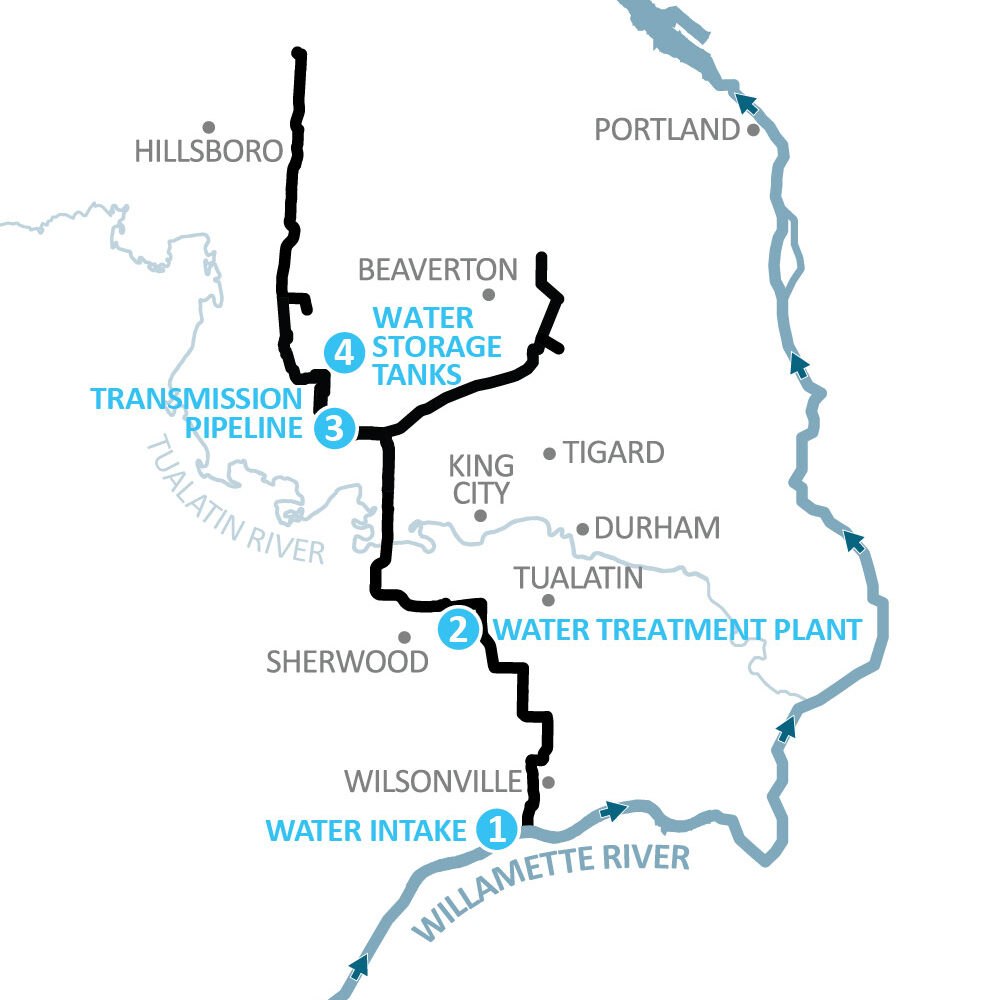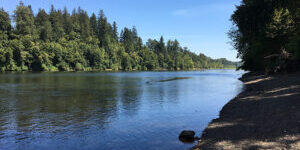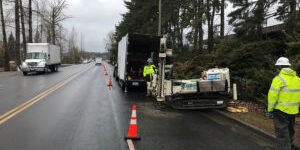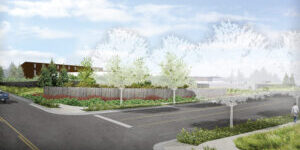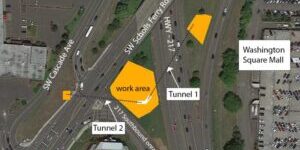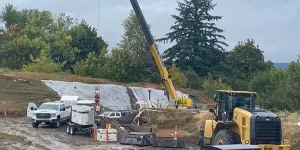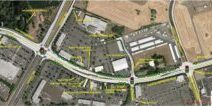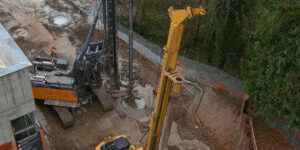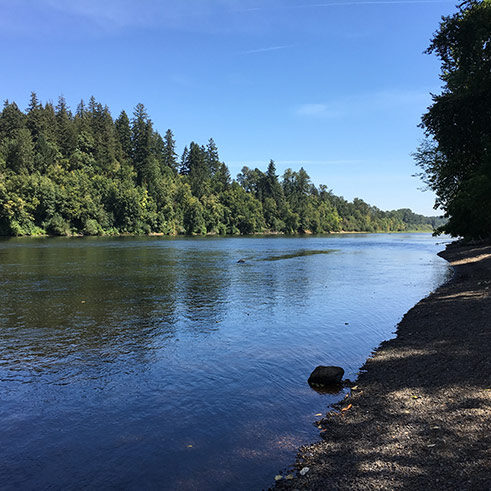
By: Steve Law
“When Hillsboro built its new city hall, the Hillsboro Civic Center, in 2005, it was built to withstand a major earthquake. Likewise, the city’s major construction project building a new water supply line from Wilsonville to Hillsboro, is being built to keep water pipes intact, even during an earthquake.”
Locals say cities are working to protect the region, but a massive quake will still cause havoc.
The “Big One” will devastate the Portland area even more than scientists expected, according to a new state geologists’ study of how a major earthquake will affect the tri-county area.
The study, released Thursday, March 15, found that a magnitude 9 earthquake centered off the Oregon Coast in the Cascadia Subduction Zone would cause tens of thousands of casualties in the Portland area, displace tens of thousands of residents from their homes, and cost tens of billions of dollars in building damage.
Virtually all of western Washington County’s population centers are within an area shaded red — the second-highest level of danger — on a risk map released along with the study by the Oregon Department of Geology and Mineral Industries.
The study estimates Hillsboro would be second only to Portland among cities in the metro area in forecast damage from a major Cascadia earthquake.
Depending on whether the magnitude 9 offshore quake occurs during the daytime or the nighttime, there could be as many as 7,700 casualties in Washington County alone, the study warns.
Up to 121 people could die immediately in an earthquake in Hillsboro, according to the study. In Forest Grove and Cornelius, the study estimates about 41 dead between the two cities.
As many as 14 percent of buildings could be total losses in the county, with the cost to repair damaged buildings estimated between $7 billion and $11.6 billion in today’s dollars.
Across the county, up to 37,700 people could be displaced for an extended period, according to the study. In the tri-county region, the estimates for long-term displaced range from 16,800 to 85,300.
Casualties, damage and displacement are expected to be higher if the soil is saturated — in other words, if it has been raining and the ground is soft, as it is for much of the year in northwestern Oregon. An earthquake that strikes during the day is expected to be deadlier as well. The top end of estimates represents the worst-case scenario, in which the soil is saturated and the quake hits during daytime hours.
While the eastern end of the region, including the Gresham area, is not expected to be as hard-hit as Portland and its Westside suburbs, damage is still forecast to be widespread as far as the Cascades.
“Although damage estimates vary widely throughout the study area, no community will be unharmed,” the authors concluded.
Recovering from a Cascadia earthquake won’t be just a matter of putting out fires and stemming floods. There will be region-wide challenges to restore power, bridges and freeways, provide emergency medical care and assure food and water can be delivered.
It will take months just to inspect homes and other damaged buildings to see if they are safe. Meanwhile, many will have to find other shelter, and some work places will have to be closed or relocated.
Local reaction
The Forest Grove Sustainability Commission, which advises the Forest Grove City Council on environmental issues, recently held an event at which Stacy Metzger dispensed earthquake preparedness advice.
Metzger volunteers as the “Map Your Neighborhood” coordinator for Forest Grove Fire & Rescue.
“For Forest Grove alone, the prediction is an earthquake of this size would create $496 million in property damage, 2,200 people in need of shelters, nearly 600 injuries (142 of which would require hospitalization), and 36 fatalities,” Forest Grove Fire & Rescue reported on its official Facebook page, listing some of the projections for the city from the state geologists’ study.
Such an earthquake is hard to imagine and difficult to predict, the agency said, but it would “undoubtedly devastate northwest Oregon.”
“This is a good wake-up call, and it is even more reason to get prepared for a large earthquake,” Metzger said Monday.
Metzger has two degrees in geology and spends a lot of time thinking about earthquake preparedness. But even she can’t predict what an earthquake will look like in her community of Forest Grove when it hits.
“I just say be prepared for the worst, and then you’re prepared for everything or anything, big or small,” she said.
Washington County and the Oregon Office of Emergency Management urge residents to be “two weeks ready,” keeping a two-week supply of necessities on hand in case of a major earthquake that cripples infrastructure and disrupts the transportation network. But Metzger encourages anyone who might find a two-week requirement daunting to start out by building a three-day kit. As she pointed out, you can always add to it later.
Hillsboro city officials have been preparing for a major earthquake for years, according to Tammy Bryan, emergency manager for the Hillsboro Fire Department.
“Prior to the release of this study, the region was reliant on information that was 20 years old,” Bryan said. “While this study does not tell us what will happen to specific homes or businesses, it does give us a greater understanding of potential impacts for our City. This information reinforces the need for continued planning, training, and collaboration to further reduce these impacts and become more resilient.”
When Hillsboro built its new city hall, the Hillsboro Civic Center, in 2005, it was built to withstand a major earthquake. Likewise, the city’s major construction project building a new water supply line from Wilsonville to Hillsboro, is being built to keep water pipes intact, even during an earthquake.
“While the threat of an earthquake may seem daunting, making a plan and identifying things you can do now to prepare can significantly reduce injuries and property damage,” the city wrote on its website about earthquake preparedness.
In the event of an earthquake, city services, such as police and fire, will likely be busy, so officials warn residents to prepare to deal with emergencies until help arrives.
“Emergency preparedness is a shared responsibility,” the city said. “Citizens need to have some basic first aid skills and supplies, and will need to fend for themselves for all but the most severe calls until the demands for service returns to normal.”
In addition to planning emergency kits, city officials urge residents to make homes “earthquake safe” by bolting down and securing water heaters, refrigerators, furnaces and gas appliances, and repairing leaky gas lines and fastening shelves, mirrors and large picture frames to walls.
New software, new findings
The new study shows more severe impacts than previous estimates. But it didn’t bring any surprises or point to any new prevention efforts that haven’t been considered before, said Dan Douthit, spokesman for the Portland Bureau of Emergency Management.
“We’ve already been expecting significant damages,” Douthit said, “and every year that goes by, we get more and more prepared.”
Emergency planners still will focus on the region’s greatest vulnerabilities, including more than 1,600 unreinforced masonry buildings in the city of Portland. Many of the buildings in Forest Grove, one of the region’s oldest cities, feature unreinforced masonry as well.
“We know that unreinforced masonry buildings are likely to collapse, especially during a Cascadia subduction zone earthquake,” Douthit said. “Those pose an immediate life safety risk for people in them and people walking by during an earthquake.”
But the new study, using more sophisticated Hazus software developed for the Federal Emergency Management Agency (FEMA), enabled scientists to drill down to damages at the neighborhood level as never before. The software is being constantly refined, incorporating real-world experiences from floods and earthquakes taking place around the world.
That enabled scientists to calculate the number of deaths, life-threatening injuries and hospitalizations that will occur in different neighborhood clusters in Portland and cities around the tri-county area.
Scientists now calculate there have been at least 40 large-magnitude earthquakes over the past 10,000 years along the 600-mile-long Cascadia subduction zone off the coasts of Oregon, Washington and Northern California. The most recent one occurred in 1700, and one recent study calculated there is a 15 to 20 percent chance that another one will occur in the next 50 years off the central and northern Oregon Coast.
Though considerably less likely, an earthquake of magnitude 6.8 epicentered in Portland’s West Hills would be even more catastrophic locally — causing more than twice the casualties and damages — according to the Oregon Department of Geology and Mineral Industries study.
State geologists plan to release a second phase of their study next year, charting the potential impacts to Columbia County and Clark County, Wash., to the north of the tri-county region.
Mark Miller and Geoff Pursinger contributed to this report.

